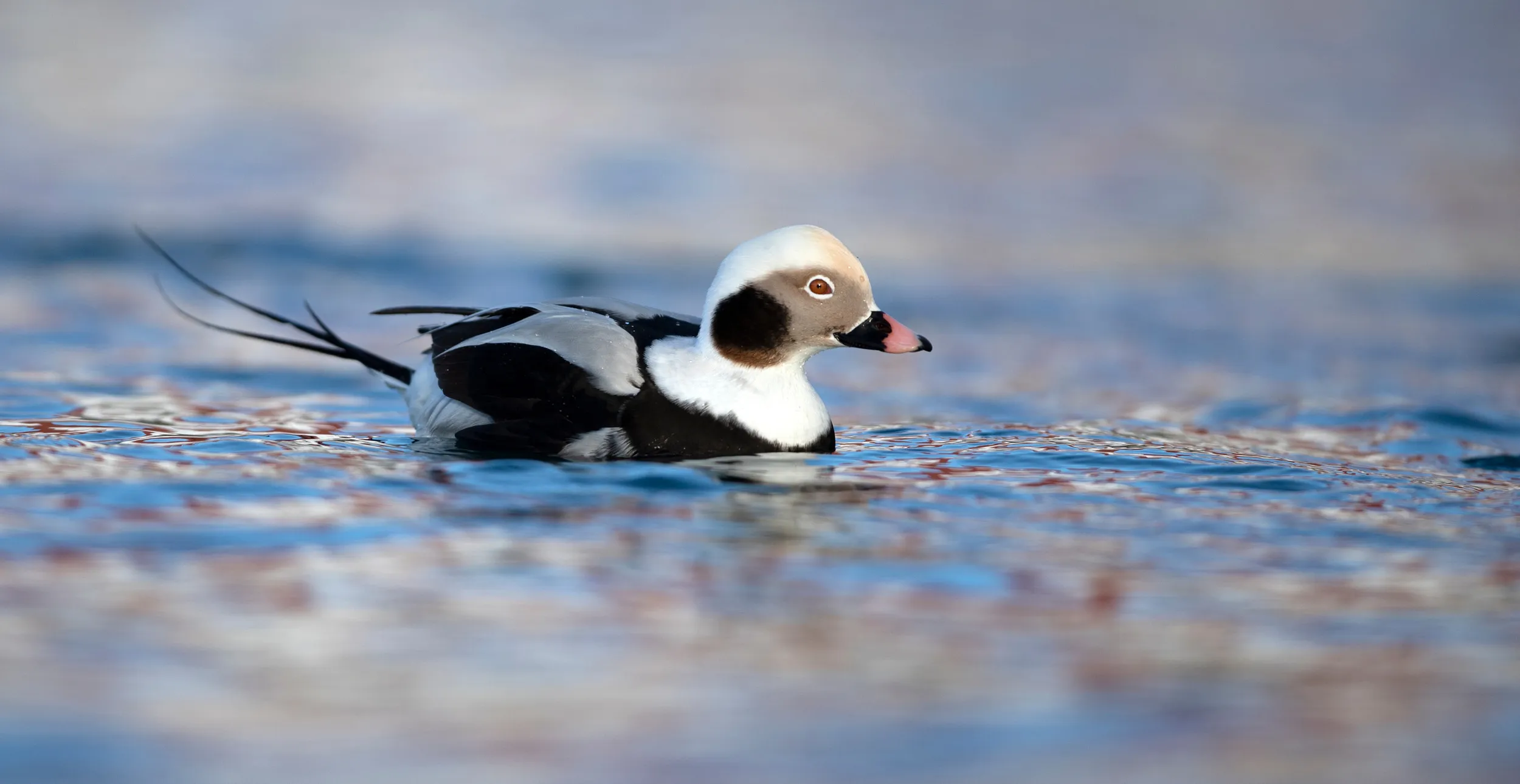Put scarecrows in the sea
No need for panic, Worzel Gummidge is fine. We’re talking about all new bouncing, bobbing scarecrows which are being trialled as a way of saving seabirds... They may look like an elongated minion, but don’t let that fool you. These odd-looking devices are the very latest in potential seabird saving technology.

On this page
The problem
Gillnets are used all over the world by the fishing industry to catch fish for us to eat. The gillnet is hung as a giant wall of netting, suspended in the water with the aid of buoys. But as fish get trapped in the net, seabirds can be too. For many it ends in disaster, with an estimated 400,000 seabirds a year drowning globally as they get accidentally caught in gillnets. This is known as bycatch. The birds caught include vulnerable species such as Northern Gannets and Guillemots in the UK and Black Guillemots, Long-tailed Ducks and Velvet Scoters internationally.

The solution
One way to prevent seabirds getting caught in the nets is to try and stop them diving near them in the first place. Enter the Looming Eye Buoy, or LEB to their friends.
Working with engineers from Fishtek Marine, plans were drawn up to create a device which was scary, hardy and cost effective. A pair of big googly eyes were positioned on rotating panels attached to a rod and put on a bright yellow fishing buoy. The motion of the ocean and the wind would make sure the eyes bobbed, bounced and loomed ominously, to add extra fear factor.
Fear test
Next the LEBs needed to be tested out at sea. With funding from the National Geographic Society we worked with the Estonian Ornithological Society to deploy the LEBs in the Baltic sea. An area near the island of Saaremaa off the Estonian coast was chosen because it is a well-known wintering ground for thousands of sea ducks.

Promising results
After 250 hours of testing the results were in. They suggested the LEBs might work, reducing by a quarter the number of Long-tailed Ducks within a 50 mile radius compared to traditional fishing buoys. The tests also suggest that seabird immediately revisited the area after the LEBs had been removed, meaning they were not permanently deterred.
New high-flying trials
At the moment it’s too early to say that these scarecrows are outstanding in their field. The plan is to keep testing the LEBs on commercial fisheries to gather more data. This includes in Cornwall where the LEBs were used last winter by the Cornish gillnet fleet. They were tested alongside another trial nature saving technique – predator kites.
Inspired by BirdLife partners in Portugal and Lithuania, the kites which look like birds of prey are deployed to scare away seabirds from fishing gear. In Portugal the number of seabirds being caught in gillnets and on longline hooks were reduced when kites were flown.
Both the LEBs and the kites were used in trials in Iceland this spring and will be redeployed in Cornwall this winter to further monitor the nature saving benefit they could have.
If you eat fish, the Marine Conservation Society have a great guide to help you make informed choices about which fish you buy. Catch up with their latest advice here.
